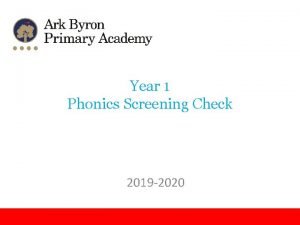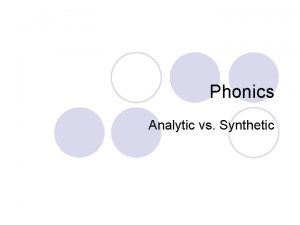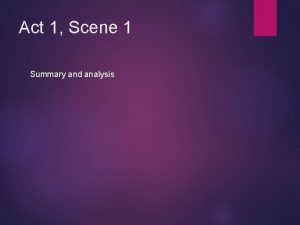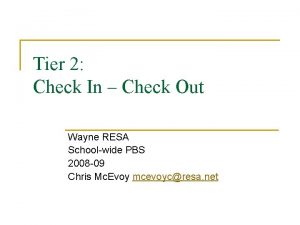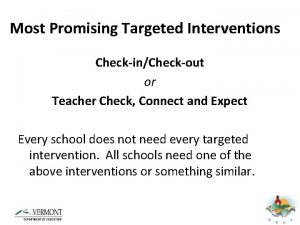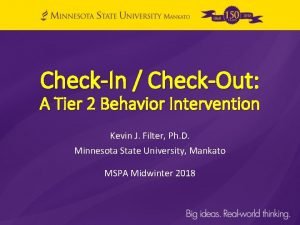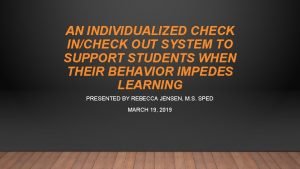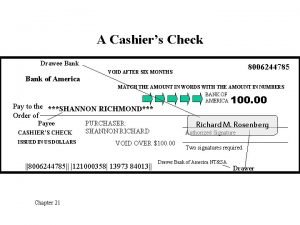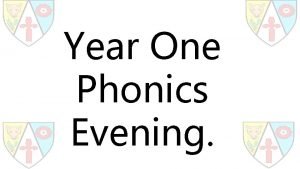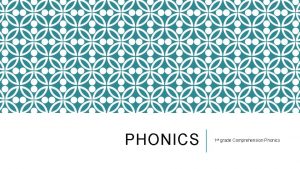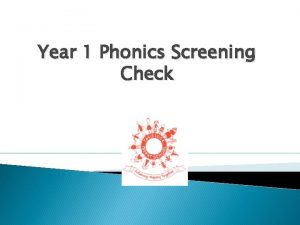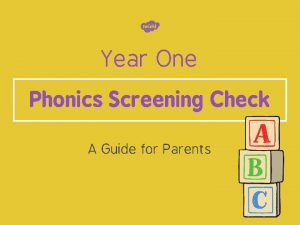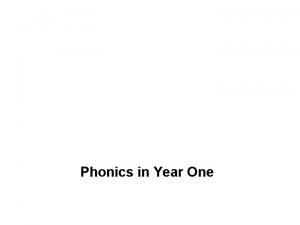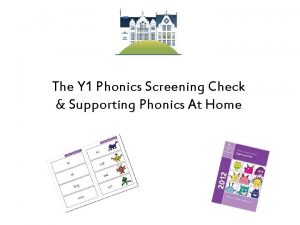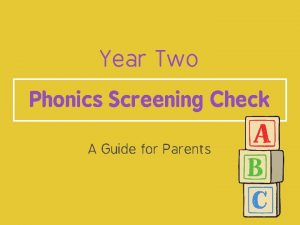Year One Phonics Screening Check A Guide for










- Slides: 10

Year One Phonics Screening Check A Guide for Parents

Chapters 1 2 3 What is Phonics? What is the Phonics Screening Check? What Happens During the Screening? 4 5 6 Pseudo Words (Nonsense words) Reporting to Parents How Are the Results Used? 7 How Can I Help My Child at Home? next page

What is Phonics? Children begin to learn phonics (sounds) in early years, both nursery and reception. Once children begin learning sounds, these sounds are used orally to identify and make words. They will then begin to learn the letters which make each of the sounds and these are used to read and spell words. chapter menu next page

What is the Phonics Screening Check? Children in Year 1 throughout the country will all be taking part in a phonics screening check during the same week in June. Children in Year 2 will also take the check if they did not achieve the required result when in Year 1 or they have not taken the test before. The phonics screening check is designed to confirm whether individual children have learnt phonic decoding and blending skills to an appropriate standard. chapter menu next page

Year One Phonics Check • The phonics screening check is a short assessment to check whether pupils have achieved an appropriate standard of phonic decoding skills by age 6. • All year one pupils in maintained schools, academies and free schools must complete the check. Maintained nursery schools with pupils who will reach the age of 6 before the end of the school year must also participate. • The phonics check acts as an assessment to help teachers identify children who need extra phonics support and intervention. These children then retake the check in year two. • The check comprises a list of 40 words and non-words (pseudo words), which the child will read one-to-one with a teacher chapter menu next page

What Happens During the Test? The check must be administered on a one-to-one basis by a teacher who is familiar to the pupil. The role of check administrator requires a teacher’s professional judgment about which responses are correct. The test contains 40 words. Each child will sit one-to-one and read each word aloud to a teacher. The test will take approximately 10 minutes per child, although all children are different and will complete the check at their own pace. The list of words the children read is a combination of 20 real words and 20 pseudo words (nonsense words). chapter menu next page

Pseudo Words (Nonsense Words) The pseudo words will be shown to your child with a picture of an alien. This provides the children with a context for the pseudo word which is independent from any existing vocabulary they may have. Pseudo words are included because they will be new to all pupils; they do not favour children with a good vocabulary knowledge or visual memory of words. chapter menu next page

Reporting to Parents By the end of the summer term all schools must report each child's results to their parents. They will also confirm if the child has met the standard threshold. Children who do not achieve the expected level will retake the test when they are in Year 2. chapter menu next page

How Are the Results Used? Results from the check will be used by schools to analyse their own performance and for Ofsted to use in inspections. The test can be marked after the ‘threshold’ has been published. This will be communicated with schools. Scores will then be sent to the school’s Local Authority. chapter menu next page

How Can I Help My Child at Home? • Play lots of sound and listening games with your child. • Read as much as possible to and with your child. • Encourage and praise – get them to have a ‘good guess’. • If your child is struggling to decode a word, help them by encouraging them to say each sound in the word from left to right. • Blend the sounds by pointing to each one, e. g. /c/ in cat, /p/ in pat, /ng/ in sing, /ee/ in been. Next move your finger under the whole word as you say it. • Discuss the meaning of words if your child does not know what they have read. chapter menu next page
